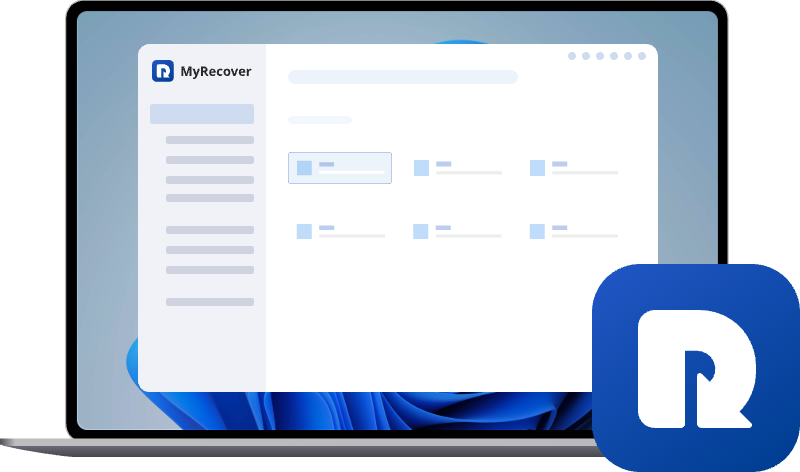How to Recover Deleted Excel Files on Windows PC
Accidentally deleted an Excel file? Whether it's a temporary deletion or a permanently lost file, this guide covers multiple recovery methods. Learn how to retrieve deleted Excel files in Windows 10/11, and even from a pen drive using built-in tools and data recovery software.
Can I Recover A Excel File I accidentally Deleted?
I was moving an Excel from one drive folder to another and but accidentally deleted it instead. No recent backup! What can i do to recover the deleted Excel file? Anyone can help? Thanks!
- Question from techcommunity.microsoft.com
Microsoft Excel is a powerful spreadsheet tool widely used for data analysis, financial reports, project tracking, and more. With its ability to handle complex calculations and large datasets, it has become an essential software for professionals and students alike. However, losing an important Excel file due to accidental deletion can be frustrating and stressful.
If you’ve accidentally deleted an Excel file, don’t panic! There are several ways to retrieve it, whether it was recently deleted, permanently removed, or lost due to a system crash. Let’s explore the best recovery methods to help you restore your file quickly.
How to Recover Deleted Excel Files in Windows 11/ 10?
Now, we will walk you through 5 different methods to help you recover deleted Excel in Windows 11 or Windows 10. Follow the steps carefully to restore your important data and continue working without disruptions.
Method 1. Recover Deleted Excel File by “Ctrl+Z” Shortcuts
If you accidentally delete Excel file or other types of data on Windows computer, you can recover the file by the shortcut keys "Ctrl+Z", which is also known as "undo delete". Just right-click on the blank area of your screen and click on “Undo Delete" from the drop-down menu.
Method 2. Retrieve Deleted Excel File from Recycle Bin
Besides, you can check the Windows Recycle Bin to see if the deleted Excel file is there. If it is, right-click on it and select "Restore", then it will re-appear in the original location.
Method 3. Restore Permanently Deleted Excel by File History
When you delete Excel from pen drive, it won’t go to Recycle Bin since it only works for local hard drives (HDD/SSD). It does not manage removable storage devices like USB flash drives, SD cards, or external hard drives. After deletion, the system simply marks the file's storage space as "available", waiting for new data to overwrite it.
In such one case, you cannot restore them from Recycle Bin as normal. Luckily, you can use another Window in-built tool: File History. Once enabled, it will automatically back up files and folders to a network location, external drive, or OneDrive. It can help you restore files that are lost, damaged, or deleted.
Step 1. Access to the folder the deleted excels are saved before in File Explorer.
Step 2. Right-click on the drive folderand select “Restore previous versions”.
Step 3.The Previous Versions tab lists the available previous versions of the file or folder. Select a previous version of files you want to restore.
Method 4. Recover Excel Files by Windows File Recovery
If you did not enable any Windows backup setting like File History, you can try "Windows File Recovery". This is a command-line tool developed by Microsoft that helps retrieve lost files deleted from your local storage device (including internal drives, external drives, and USB devices) and that can’t be restored from the Recycle Bin.
However, it does not come preinstalled on Windows, so you’ll need to download and install it from the Microsoft Store before using it. Once installed, you can run the “winfr”command to restore your deleted files.
Step 1. Download Windows File Recovery in Microsoft store and Install Windows File Recovery on your Windows computer.
Step 2. After installation, search for "cmd" and selecting "Run as Administrator."
Step 3. In the Command Prompt window, type “winfr”and press Enter to verify that the tool is installed properly.
Step 4. To recover deleted files, use the “winfr”command followed by the source drive, destination drive, and recovery parameters. For example: winfr C: D: /n \Users\YourName\Documents\*.xlsx
This will scan your “C:”drive for Excel files (.xlsx) and attempt to recover them to the “D:”drive. You can adjust the command to fit your specific needs, such as specifying the folder or file type you're trying to recover.
When prompted to continue, simply press Y on your keyboard to proceed.
Step 5. Once you run the command, Windows File Recovery will begin scanning the specified drive for deleted files.
The process may take some time depending on the size of the drive and the number of files to be scanned. Once completed, you'll find the recovered files in the destination folder you specified. By following these steps, you can use "Windows File Recovery" to retrieve Excel files that were permanently deleted and can’t be restored from the Recycle Bin.
Method 5. Use File Recovery Software
If the above method does not help reover deleted Excel in Windows 10 or Windows 11, or you are not an expert in running any complex command, using a professional free file recovery tool might be your best option. In this case, we recommend trying MyRecover, a user-friendly software designed to recover deleted or lost files from various devices like HDD, SSD, USB Flash Drive,SD card, Camera, PS4/5, drone, CCTV, music/video players, etc.
Retrieves data lost via deletion, Recycle Bin, or "Shift+DEL" key.
Recover data from emptied Recycle Bin.
Retrieve data from formatted disks.
Restore data from malicious viruses on infected hard drives.
Recover data after system crash (upgrade to Professional or Technician).
Image: JPG/JPEG/JPE, PNG, TIF/TIFF, HEVC/HEIC/HEIF, GIF, PSD, SVG, ARW, X3F, etc.
Video: MPEG/MP4, MOV, AVI/NAVI, ASF, WMV, RM/RMX, FLV/F4V QSV, etc.
Audio: MP3, CDA, WAV, AIFF, WMA, VQF, OGG, ARM, APE, FLAC, AAC, M4A, etc.
Documents: TXT, DOC/DOCX, XLS/XLSX/CSV/DBF, PDF/PDP, PPT/PPTX/ODP, etc.
Archive: 7Z, ZIP/ZIPX, ZAP RAR, AR/ARC, BZ/BZA, CAR, etc.
Now, let’s take a look at how MyRecover help recover deleted data on Windows computer.
Step 1. Download the freeware and install it on your device.
Step 2. Open it. Locate the drive where the deleted data stored and click on “Scan”.
Step 3. After scanning, all recoverable files on this selected drive will be listed. Just tick the one you want to recover and click on “Recover”.
Note: If the target file does not appear, you can perform a deep scan.
Step 4. Select a drive to save the files that will be restored later.
Step 5. Then just wait for the process to finish.
To Sum Up
Losing an important Excel file can be a stressful experience, but with the methods outlined above, there are plenty of options available to help you recover deleted Excel file in Windows computer. Whether it’s using the "Ctrl+Z" shortcut, "Recycle Bin", "File History", or utilizing "Windows File Recovery", each method offers a solution based on your specific situation.
If these methods don't work, or if you prefer a simpler, more user-friendly approach, "MyRecover" is an excellent choice for recovering deleted Excel files and other important data. With its intuitive interface and ability to recover files from various devices, your deleted Excel file can be recovered and back in your hands in just a few easy steps.


